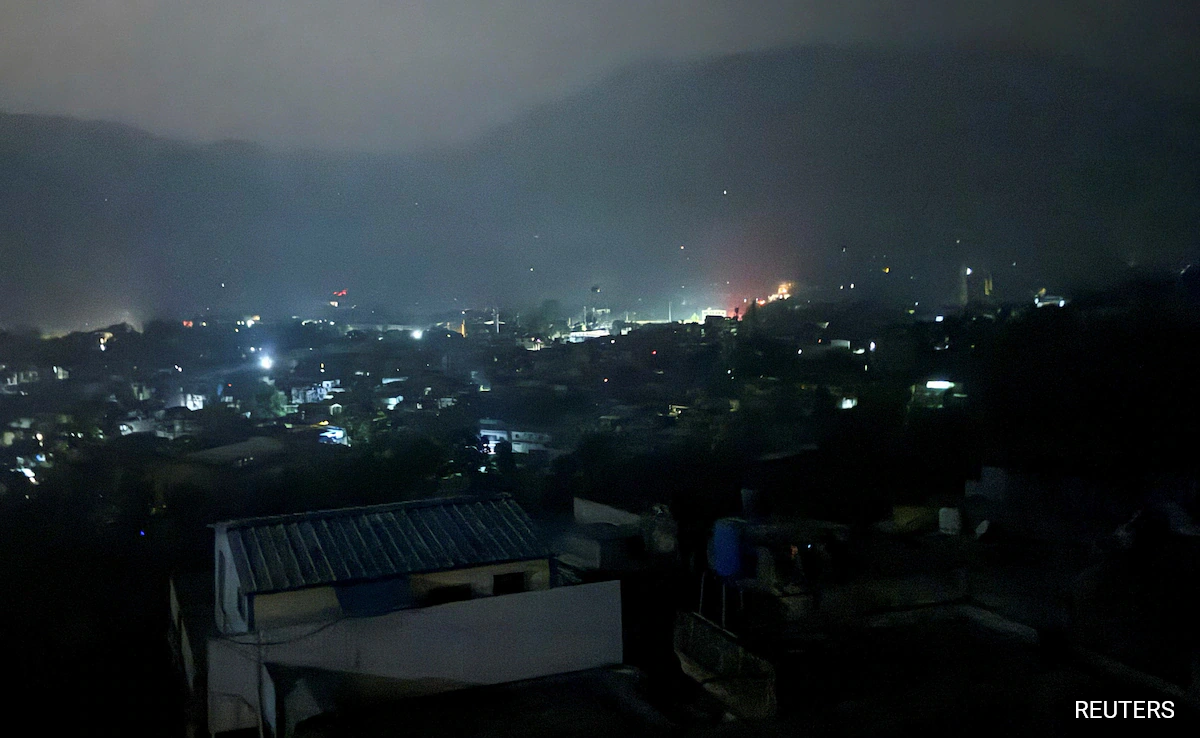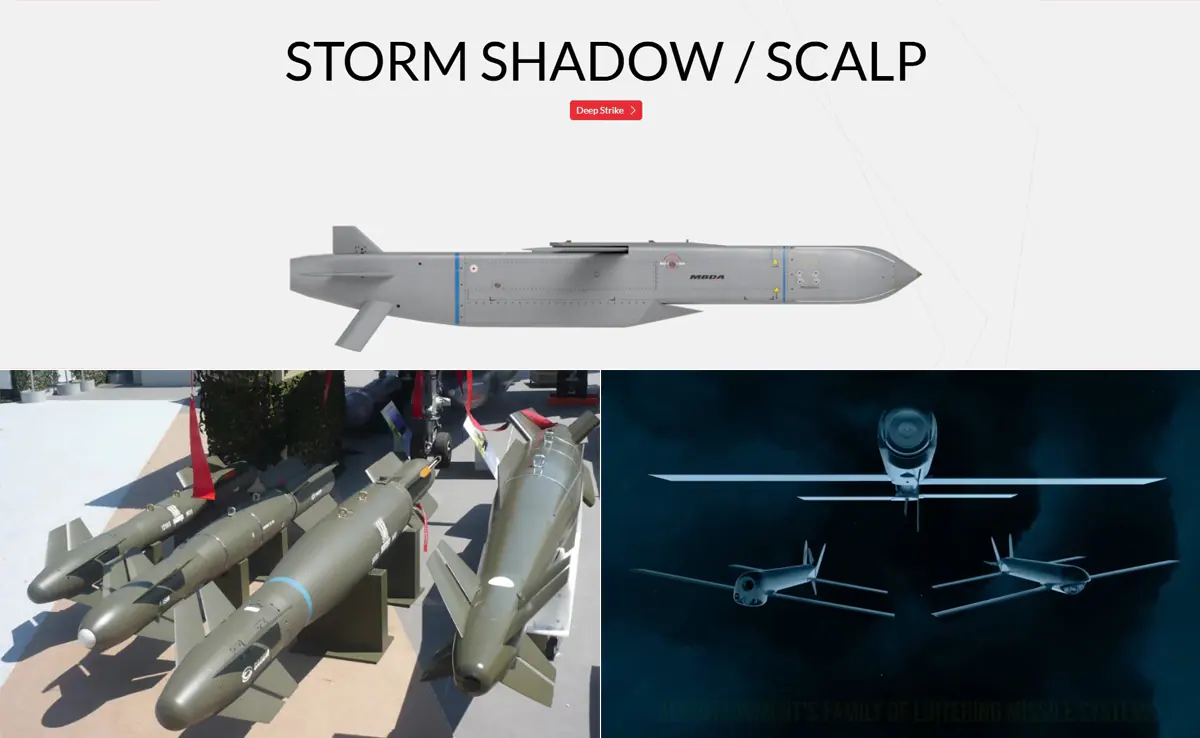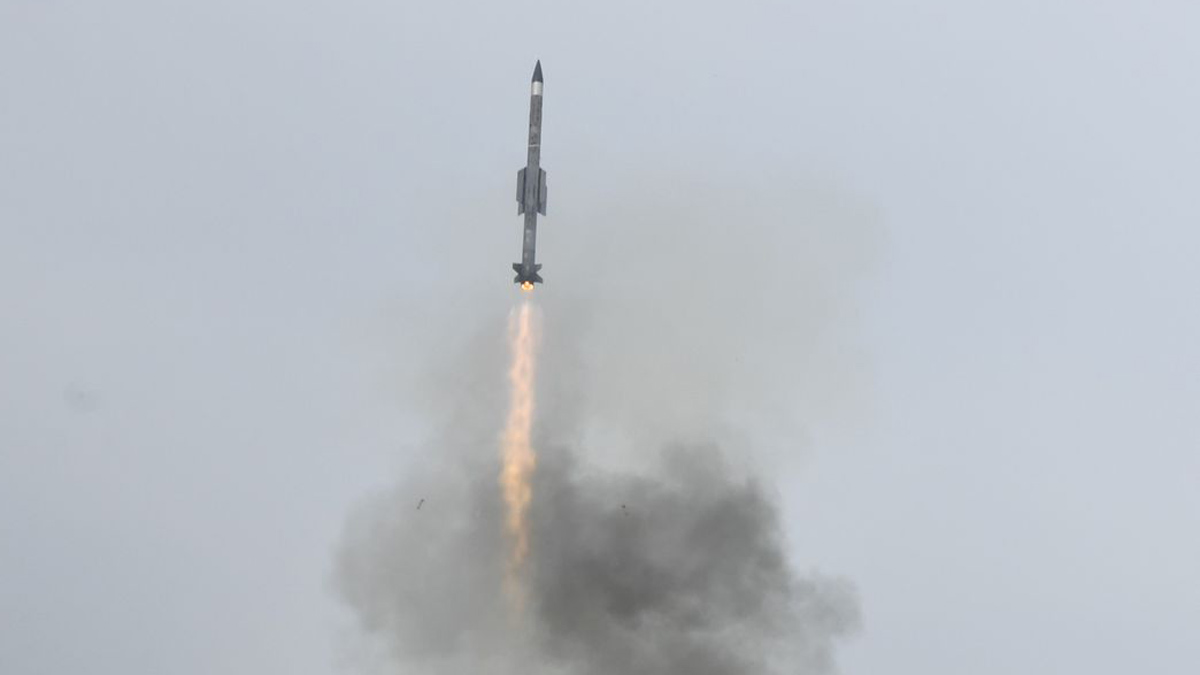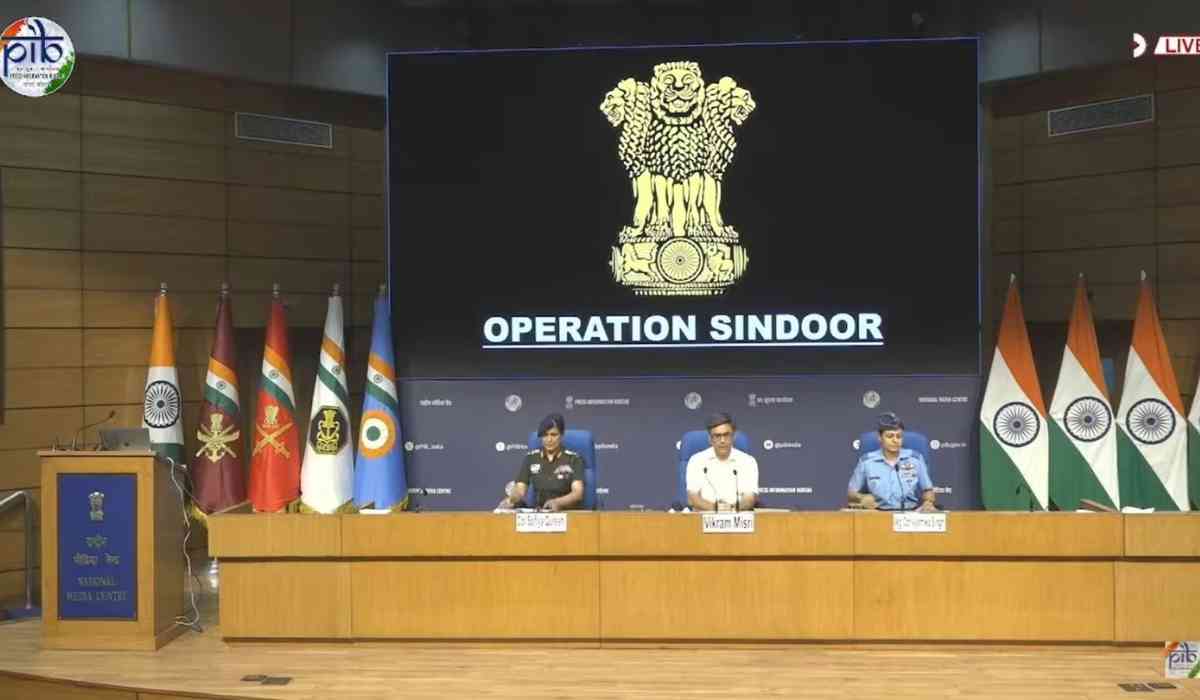In a significant military operation early on a Wednesday morning, India launched a series of missile strikes across Pakistan and Pakistan-occupied Kashmir (PoK), targeting nine terror-linked locations. The operation, named ‘Operation Sindoor,’ was a direct response to the deadly terrorist attack in Pahalgam, Jammu and Kashmir, on April 22, which resulted in the loss of 26 lives. These strikes are considered one of the most extensive cross-border precision operations carried out by India since the Balakot airstrike in 2019.
The precision strikes were executed with a combination of high-tech weapons, including SCALP cruise missiles, HAMMER bombs, and loitering munitions (also known as kamikaze drones). The operation was meticulously planned and carried out by all three branches of the Indian Armed Forces—Army, Navy, and Air Force—aiming to neutralize terrorist infrastructure linked to groups like Jaish-e-Mohammed (JeM) and Lashkar-e-Taiba (LeT), who are known for orchestrating attacks on Indian soil.

What Triggered Operation Sindoor?
The operation was a direct response to the April 22 terrorist attack in Pahalgam, Jammu and Kashmir. The attack resulted in the death of 26 civilians, including a serving Indian Navy officer and a Nepali national. Intelligence pointed to the involvement of Lashkar-e-Taiba (LeT), a Pakistan-based terror outfit that has long been accused of receiving logistical and financial support from the Pakistani establishment.
With growing domestic and international pressure to act decisively, Indian Prime Minister Narendra Modi, who had chaired several security meetings post-attack, monitored Operation Sindoor in real-time, staying true to his vow to "identify, track, and punish" those responsible for the Pahalgam tragedy.

What are Loitering Munitions (Kamikaze Drones)?
Loitering munitions are a class of precision weapon that remain airborne over a target area, awaiting an opportunity to strike. These systems either operate autonomously or are controlled remotely. When they lock onto a target, they dive in and explode on impact, making them a highly effective and low-risk option for attacking targets without risking military personnel or expensive assets.
Loitering munitions are often referred to as “kamikaze drones” due to their self-destructive nature. These drones are equipped with a warhead and can be used to target hidden or time-sensitive objectives quickly. Their ability to hover over an area before engaging makes them particularly useful for attacking specific, high-priority targets, such as terrorist hideouts or infrastructure.
India has actively incorporated loitering munitions into its defense strategy, receiving 480 locally manufactured units, including the Nagastra-1 by Solar Industries in Nagpur. These drones are considered highly effective in missions requiring precision targeting.
The Role of SCALP and HAMMER Missiles
The SCALP and HAMMER missiles played pivotal roles in Operation Sindoor, enabling the Indian Air Force (IAF) to execute long-range and medium-range strikes with unparalleled accuracy.
SCALP Missiles: Deep Strike Capabilities
The SCALP missile, also known as Storm Shadow, is a long-range, air-launched cruise missile with a range of over 250 kilometers. Designed for deep strike missions, it is capable of taking out hardened targets such as bunkers, command centers, and critical infrastructure deep within enemy territory. In Operation Sindoor, SCALP missiles were launched from Rafale jets, the most advanced fighter aircraft in the IAF’s arsenal.
-
Key Features of SCALP:
-
Air-launched, long-range precision strike missile
-
Effective against high-value, stationary targets
-
Supports stealth strikes well beyond enemy lines
-
Also used in military operations in Iraq, Libya, Syria, and Ukraine
-
The SCALP missile’s deep-strike capability allowed the Indian Air Force to target strategic sites in Pakistan and PoK, ensuring minimal collateral damage while disabling critical terror infrastructure.

HAMMER Missiles: Versatility and Precision
The HAMMER (Highly Agile Modular Munition Extended Range) is a precision-guided missile designed for medium-range tactical operations. It can be launched from high altitudes and is capable of striking a variety of targets, including fortified structures and mobile assets.
-
Key Features of HAMMER:
-
Medium-range air-to-ground missile
-
Highly adaptable, with modular guidance systems like GPS, infrared imaging, and laser targeting
-
Capable of striking both stationary and moving targets with high accuracy
-
The use of HAMMER missiles in Operation Sindoor ensured that the Indian Air Force could strike key terrorist strongholds with great precision, especially in situations where versatile targeting was required.

Key Terrorist Targets Struck in Operation Sindoor
The Indian Armed Forces struck nine terror-related sites across Pakistan and PoK, with the primary targets being terror camps, training centers, and logistical hubs used by banned groups like Jaish-e-Mohammed (JeM) and Lashkar-e-Taiba (LeT).
-
Markaz Subhan Allah, Bahawalpur (JeM): This site was the operational headquarters for Jaish-e-Mohammed, a terror group involved in numerous attacks against India.
-
Markaz Taiba, Muridke (LeT): A fortified compound used by Lashkar-e-Taiba for indoctrination, logistics, and terror planning.
-
Markaz Abbas, Kotli (JeM): A hub for suicide bomber training and weapons distribution for terrorists infiltrating Jammu and Kashmir.
-
Syedna Bilal and Shawai Nalla camps, Muzaffarabad (JeM & LeT): Used as infiltration points for sleeper cells and training facilities.
-
Markaz Ahle Hadith, Barnala (LeT): A logistics hub for Lashkar-e-Taiba terrorists.
-
Sarjal, Tehra Kalan (JeM): A pre-infiltration camp for new recruits involved in terror activities.
-
Mehmoona Joya, Sialkot (HM): A training center for Hizbul Mujahideen, which continues to operate despite its declining presence in Kashmir.
Operation Sindoor UPDATES: Here is the list of nine terror facility locations in Pakistan and Pakistan-occupied Kashmir that have been successfully neutralised-
1. Markaz Subhan Allah, Bahawalpur - JeM
2. Markaz Taiba, Muridke - LeT
3. Sarjal, Tehra Kalan - JeM
4. Mehmoona Joya,… pic.twitter.com/Q3Q6vyw0Sa— Press Trust of India (@PTI_News) May 7, 2025
International Briefing and Diplomatic Messaging
Even as the operation unfolded, senior Indian officials briefed key international partners, including the United States, United Kingdom, Saudi Arabia, UAE, and Russia, about the operation’s scope and intent.
The Indian Army emphasized that no Pakistani military installations were targeted, and the execution demonstrated “considerable restraint” to avoid escalation.
The Army’s official statement read:
“A little while ago, the Indian Armed forces launched ‘Operation Sindoor’ hitting terrorist infrastructure in Pakistan and Pakistan-occupied Jammu and Kashmir from where terrorist attacks against India have been planned and directed.”
The Indian military later posted an image with the caption:
“Operation Sindoor | Justice is Served. Jai Hind!” using the hashtag #PahalgamTerrorAttack.
Pakistan’s Reaction: Rhetoric and Retaliation
Pakistan Prime Minister Shehbaz Sharif condemned the strikes, labeling them an "act of war" and vowing a strong response:
“Pakistan has every right to give a strong response to this war imposed by India… We will never allow the enemy to succeed in its malicious objectives,” he posted on X.
The Pakistani government issued a warning that India's “reckless” action had brought the two nuclear-armed neighbors “closer to a major conflict.” In response, Pakistan fired artillery along the Line of Control in the Poonch-Rajouri area, resulting in the tragic death of three Indian civilians. This incident marked the 13th consecutive ceasefire violation by Pakistan.
Strategic Impact and Future Implications
With Operation Sindoor, India demonstrated a new standard of integrated tri-services military precision. It relied heavily on technology, indigenous capabilities, and strategic planning—all executed without boots on the ground.
Key takeaways:
-
India’s Rafale jets played a central role, launching both SCALP and HAMMER missiles.
-
Loitering munitions, locally manufactured, signaled growing defense self-reliance.
-
By avoiding military targets, India signaled that its aim was counterterrorism, not escalation.
A New Era of Counter-Terror Strategy
Operation Sindoor marks a defining moment in India’s military posture. The mission showcased not only technological superiority but also strategic restraint. With precision strikes across international borders using high-end aerial weaponry, India made it clear that terror attacks will meet calibrated, lethal responses.
As India continues to enhance its defense capabilities with indigenous innovation and global partnerships, operations like Sindoor serve as a powerful deterrent and a symbol of national resolve.
With inputs from agencies
Image Source: Multiple agencies
© Copyright 2025. All Rights Reserved Powered by Vygr Media.






















